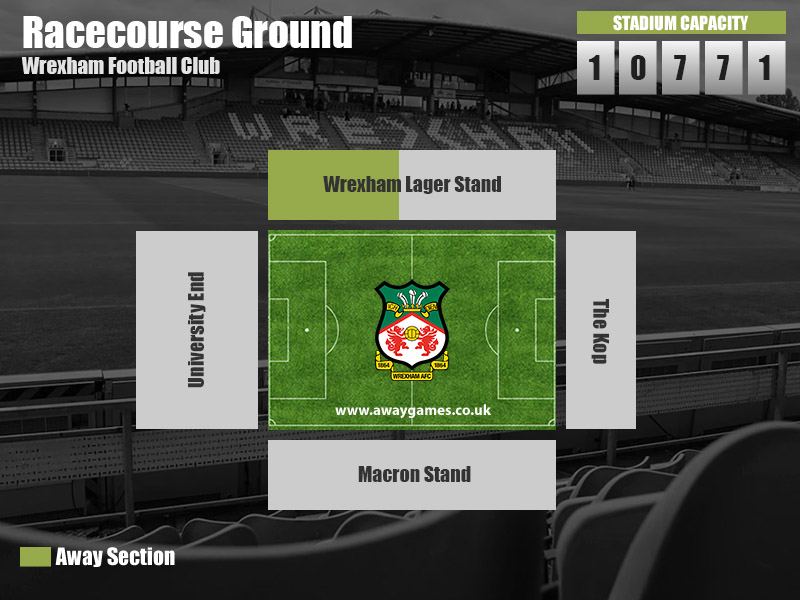New Rent Regulations: Are Tenants Bearing The Brunt?

Table of Contents
Increased Rental Costs in the Long Run
New rent regulations, often lauded as a solution to the housing crisis, can paradoxically lead to increased rental costs in the long term. This occurs through two primary mechanisms: reduced incentives for new construction and the shifting of costs onto existing tenants.
Reduced Incentive for New Construction
Rent control significantly discourages developers from building new rental units. The limitations on rent increases reduce the potential return on investment, making it less financially viable to undertake new construction projects, particularly in areas with high construction costs.
- Higher construction costs: Building materials, labor, and land prices continue to rise, squeezing profit margins for developers.
- Lower profit margins: Rent control caps limit the potential rental income, reducing the overall profitability of rental properties.
- Difficulty securing financing: Lenders are less likely to finance projects with limited potential for return, further hindering new construction.
For example, San Francisco, a city with strict rent control measures, has experienced a significant slowdown in new rental construction, contributing to a worsening housing shortage and driving up prices in the existing rental market. This demonstrates how well-intentioned rent control can backfire, creating a vicious cycle of limited supply and higher costs.
Shifting Costs to Tenants
Even with rent control in place, landlords may find ways to pass on increased operating costs (property taxes, maintenance, insurance) to existing tenants. This can manifest in several ways:
- Increased fees: Landlords may increase application fees, pet fees, or parking fees.
- Reduced maintenance: Deferred maintenance can lead to deteriorating living conditions, indirectly increasing the tenant's burden.
- Stricter tenant screening: More rigorous screening processes can exclude potential tenants, reducing competition and potentially allowing landlords to charge higher rents within the legal limits.
These cost-shifting strategies ultimately erode the benefits of rent control for tenants, leaving them vulnerable to hidden increases in their overall housing expenses.
Difficulties Finding Available Housing
New rent regulations, while aiming to stabilize housing costs, can inadvertently create a highly competitive rental market, making it harder for tenants to find available housing.
Increased Competition for Limited Units
Rent control creates a greater demand for a limited number of rent-controlled units, leading to intense competition amongst potential tenants. This situation intensifies the housing shortage and creates a difficult environment for those seeking affordable housing.
- Longer application processes: Landlords may receive numerous applications, extending the application process and creating uncertainty for applicants.
- Increased scrutiny of tenant qualifications: With high demand, landlords may become more selective, increasing the bar for prospective tenants.
- Higher deposits: Landlords might require larger security deposits to mitigate risk in a competitive market.
Cities like New York City, with extensive rent stabilization laws, illustrate this challenge. Securing a rent-controlled apartment often involves navigating lengthy waitlists and facing intense competition from other applicants.
Discrimination and Bias
The scarcity of available rent-controlled units can unfortunately create opportunities for discrimination against certain tenant groups. Landlords may prioritize tenants they perceive as less likely to challenge rent increases or cause problems, potentially leading to unfair practices.
- Preference for long-term tenants: Landlords may favor tenants who have a history of consistent rent payments, potentially excluding those with less stable rental histories.
- Families or those with higher incomes: Landlords might prioritize families or tenants with higher incomes, believing they are less likely to default on rent.
Addressing this potential for discrimination requires robust legal protections and enforcement mechanisms to ensure fair access to rental housing for all.
The Impact on Low-Income Tenants
Ironically, new rent regulations, while designed to protect low-income tenants, can sometimes lead to their displacement or limit their opportunities for upward mobility.
Displacement of Low-Income Residents
Rent control can indirectly lead to the displacement of low-income residents through several mechanisms:
- Landlords choosing to sell properties: Faced with limited rent increases, landlords may decide to sell their properties rather than continue operating rental units.
- Converting rentals to condos: Converting rental buildings into condominiums removes rental units from the market, reducing the supply of affordable housing.
- Neglecting maintenance: Limited rental income might incentivize landlords to neglect necessary maintenance, making rental units uninhabitable and forcing tenants to relocate.
Data from cities with long-standing rent control policies show a correlation between these practices and displacement of low-income residents.
Limited Options for Upward Mobility
Rent control can limit the opportunities for low-income tenants to move to better housing as their incomes rise. The lack of rental incentives for landlords to improve existing units and the limited availability of better-quality housing at affordable prices can trap tenants in substandard conditions.
- Lack of incentives for landlords to improve units: With limited potential for rent increases, landlords have less incentive to invest in renovations or upgrades.
- Limited availability of better-quality housing: The shortage of affordable housing options limits the ability of low-income tenants to move to better living conditions.
Alternative housing policies, such as targeted subsidies or inclusionary zoning, may offer more effective pathways to improving affordability and providing opportunities for upward mobility for low-income tenants.
Conclusion
New rent regulations, while aiming to address the housing crisis and protect tenants, may inadvertently create unintended negative consequences. The reduced incentive for new construction, shifting of costs to tenants, increased competition for limited units, potential for discrimination, and displacement of low-income residents are all significant concerns. Understanding the complexities of new rent regulations is crucial for creating truly effective and equitable housing policies. Learn more about the impact of rent control in your area and get involved today by contacting your local representatives or supporting organizations advocating for tenant rights and affordable housing solutions. Let’s work together to find sustainable solutions that truly benefit all members of our communities.

Featured Posts
-
 Wrexham A Travel Guide For Football Fans And Beyond
May 28, 2025
Wrexham A Travel Guide For Football Fans And Beyond
May 28, 2025 -
 Seattle Mariners 2025 And 2026 Projected Lineups Post Raleigh Extension
May 28, 2025
Seattle Mariners 2025 And 2026 Projected Lineups Post Raleigh Extension
May 28, 2025 -
 Angels 8 Game Winning Streak Halted By Marlins
May 28, 2025
Angels 8 Game Winning Streak Halted By Marlins
May 28, 2025 -
 Analyzing The Recent Dip In Crime In Chicago Causes And Concerns
May 28, 2025
Analyzing The Recent Dip In Crime In Chicago Causes And Concerns
May 28, 2025 -
 Data Leak Fears Privacy Regulators Warning On New Cabinet Rules
May 28, 2025
Data Leak Fears Privacy Regulators Warning On New Cabinet Rules
May 28, 2025
